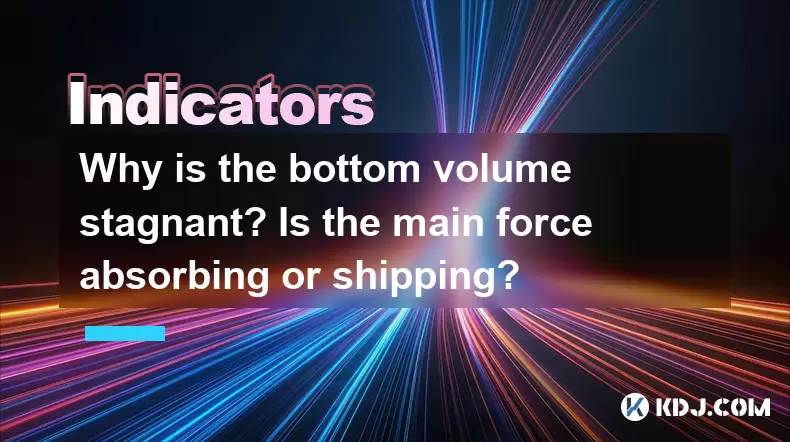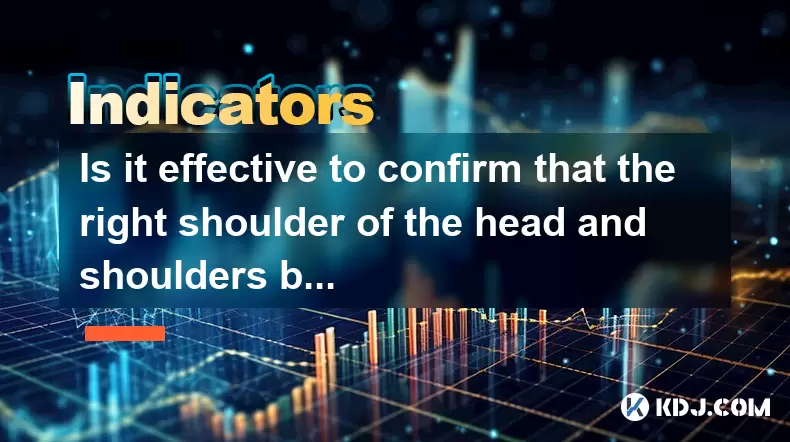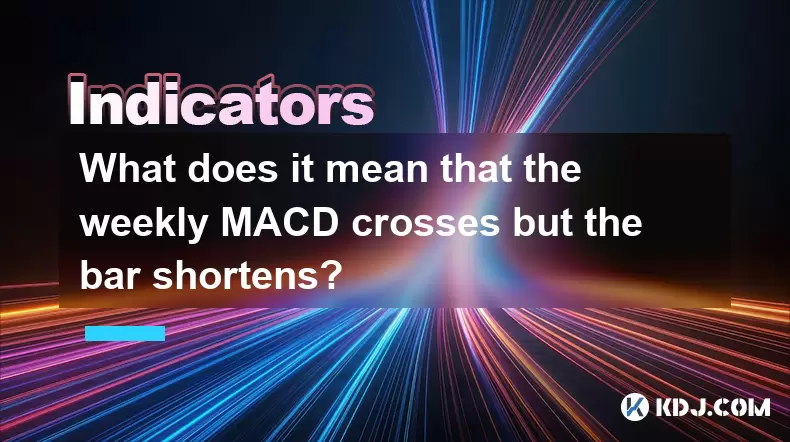-
 Bitcoin
Bitcoin $106,754.6083
1.33% -
 Ethereum
Ethereum $2,625.8249
3.80% -
 Tether USDt
Tether USDt $1.0001
-0.03% -
 XRP
XRP $2.1891
1.67% -
 BNB
BNB $654.5220
0.66% -
 Solana
Solana $156.9428
7.28% -
 USDC
USDC $0.9998
0.00% -
 Dogecoin
Dogecoin $0.1780
1.14% -
 TRON
TRON $0.2706
-0.16% -
 Cardano
Cardano $0.6470
2.77% -
 Hyperliquid
Hyperliquid $44.6467
10.24% -
 Sui
Sui $3.1128
3.86% -
 Bitcoin Cash
Bitcoin Cash $455.7646
3.00% -
 Chainlink
Chainlink $13.6858
4.08% -
 UNUS SED LEO
UNUS SED LEO $9.2682
0.21% -
 Avalanche
Avalanche $19.7433
3.79% -
 Stellar
Stellar $0.2616
1.64% -
 Toncoin
Toncoin $3.0222
2.19% -
 Shiba Inu
Shiba Inu $0.0...01220
1.49% -
 Hedera
Hedera $0.1580
2.75% -
 Litecoin
Litecoin $87.4964
2.29% -
 Polkadot
Polkadot $3.8958
3.05% -
 Ethena USDe
Ethena USDe $1.0000
-0.04% -
 Monero
Monero $317.2263
0.26% -
 Bitget Token
Bitget Token $4.5985
1.68% -
 Dai
Dai $0.9999
0.00% -
 Pepe
Pepe $0.0...01140
2.44% -
 Uniswap
Uniswap $7.6065
5.29% -
 Pi
Pi $0.6042
-2.00% -
 Aave
Aave $289.6343
6.02%
Why is the bottom volume stagnant? Is the main force absorbing or shipping?
Bottom volume stagnation in crypto markets may indicate main force accumulation or distribution, affecting future price movements.
Jun 08, 2025 at 03:49 am

Introduction to Bottom Volume Stagnation
When discussing the bottom volume stagnation in the context of cryptocurrency markets, it's essential to understand the underlying mechanics and what it might indicate about market sentiment and the actions of the main force, which typically refers to large institutional investors or whales. Bottom volume stagnation refers to a period where the trading volume at the lower end of the price range remains low and does not increase significantly. This phenomenon can signal various market conditions and strategies employed by the main force.
Understanding Trading Volume and Its Significance
Trading volume is a critical indicator in the cryptocurrency market, as it reflects the level of interest and activity in a particular asset. High volume often indicates strong interest and can lead to significant price movements, while low volume may suggest a lack of interest or a consolidation phase. When the volume at the bottom of the price range stagnates, it means that there is little buying interest at these levels, which can be interpreted in different ways.
Possible Reasons for Bottom Volume Stagnation
There are several reasons why the bottom volume might stagnate in the cryptocurrency market. One primary reason could be that the market is in a consolidation phase, where neither buyers nor sellers have a strong enough conviction to drive the price significantly in either direction. Another possibility is that investors are waiting for more significant market signals before making large trades, leading to a temporary lull in trading activity.
Is the Main Force Absorbing or Shipping?
The actions of the main force can significantly influence whether the bottom volume remains stagnant. If the main force is absorbing, they are quietly accumulating the asset at lower prices, which could lead to a future price increase. On the other hand, if the main force is shipping, they are distributing their holdings to other investors, often at higher prices, which could signal a potential price drop.
To determine whether the main force is absorbing or shipping, one can look at several indicators:
- Volume Profile: If there is a noticeable increase in volume at higher price levels, it might indicate that the main force is shipping. Conversely, if the volume is concentrated at lower levels, it could suggest absorption.
- Order Book Depth: A deep order book at lower price levels might indicate that the main force is absorbing, as they are willing to buy at these prices.
- On-Chain Data: Analyzing on-chain metrics such as large transaction volumes and wallet movements can provide clues about the main force's actions.
Analyzing the Market Context
Understanding the broader market context is crucial when interpreting bottom volume stagnation. If the overall market is experiencing a bullish trend, the stagnation at the bottom might indicate that the main force is absorbing, preparing for a potential upward move. In contrast, if the market is bearish, the main force might be shipping, taking advantage of the higher prices to sell their holdings.
To gain a deeper insight into the market context, consider the following:
- Market Sentiment: Use tools like social media sentiment analysis to gauge the overall mood of the market.
- Technical Analysis: Look at key technical indicators such as moving averages, RSI, and MACD to understand the current trend and potential reversal points.
- Fundamental Analysis: Assess the underlying value and potential of the cryptocurrency to determine if it aligns with the current price action.
Using Tools to Monitor Volume and Main Force Activity
To effectively monitor bottom volume stagnation and the actions of the main force, traders can use various tools and platforms. Here are some steps to set up and use these tools:
- Choose a Trading Platform: Select a reputable cryptocurrency exchange that offers advanced charting and volume analysis tools.
- Examples include Binance, Coinbase Pro, and Kraken.
- Set Up Volume Indicators: Add volume indicators to your charts to track the trading activity at different price levels.
- Use tools like Volume Profile or Volume Weighted Average Price (VWAP).
- Monitor Order Book: Keep an eye on the order book to see the depth of buy and sell orders at various price levels.
- This can help identify where the main force might be absorbing or shipping.
- Use On-Chain Analytics: Platforms like Glassnode and CryptoQuant provide detailed on-chain data that can reveal large transactions and wallet movements.
- Look for patterns that indicate accumulation or distribution by large investors.
Case Studies of Bottom Volume Stagnation
To better understand how bottom volume stagnation can play out in real-world scenarios, let's look at a couple of case studies from the cryptocurrency market.
- Case Study 1: Bitcoin in 2020: During the early months of 2020, Bitcoin experienced a period of bottom volume stagnation around the $6,000 to $7,000 range. Analysis of on-chain data revealed that large investors were quietly accumulating, which led to a significant price surge later in the year.
- Case Study 2: Ethereum in 2018: In contrast, Ethereum's bottom volume stagnation in late 2018 was followed by a prolonged bear market. On-chain data showed that the main force was shipping, distributing their holdings at higher prices before the price dropped further.
FAQs
Q1: Can bottom volume stagnation occur in all cryptocurrencies, or is it more common in certain types?
Bottom volume stagnation can occur in any cryptocurrency, but it is more commonly observed in larger, more liquid assets like Bitcoin and Ethereum. These assets have a broader investor base and are more likely to attract the attention of the main force, leading to more pronounced volume patterns.
Q2: How long does bottom volume stagnation typically last?
The duration of bottom volume stagnation can vary widely, ranging from a few days to several weeks or even months. It depends on the overall market conditions and the specific actions of the main force. Monitoring volume and other market indicators can help traders anticipate when the stagnation might end.
Q3: Are there any specific technical indicators that can help predict the end of bottom volume stagnation?
While no single indicator can predict the end of bottom volume stagnation with certainty, traders often look at the following:
- Volume Surge: A sudden increase in trading volume can signal the end of stagnation.
- Breakout Patterns: Price breaking out of a consolidation range can indicate a shift in market dynamics.
- Moving Average Crossovers: Crossovers of short-term and long-term moving averages can signal a potential trend change.
Q4: How can retail investors take advantage of bottom volume stagnation?
Retail investors can use bottom volume stagnation as an opportunity to buy assets at lower prices, especially if they believe the main force is absorbing. They should:
- Monitor Volume and On-Chain Data: Look for signs that the main force is accumulating.
- Use Stop-Loss Orders: Protect against potential downside if the market moves against their position.
- Diversify: Spread investments across different assets to mitigate risk.
Disclaimer:info@kdj.com
The information provided is not trading advice. kdj.com does not assume any responsibility for any investments made based on the information provided in this article. Cryptocurrencies are highly volatile and it is highly recommended that you invest with caution after thorough research!
If you believe that the content used on this website infringes your copyright, please contact us immediately (info@kdj.com) and we will delete it promptly.
- 2025-W Uncirculated American Gold Eagle and Dr. Vera Rubin Quarter Mark New Products
- 2025-06-13 06:25:13
- Ruvi AI (RVU) Leverages Blockchain and Artificial Intelligence to Disrupt Marketing, Entertainment, and Finance
- 2025-06-13 07:05:12
- H100 Group AB Raises 101 Million SEK (Approximately $10.6 Million) to Bolster Bitcoin Reserves
- 2025-06-13 06:25:13
- Galaxy Digital CEO Mike Novogratz Says Bitcoin Will Replace Gold and Go to $1,000,000
- 2025-06-13 06:45:13
- Trust Wallet Token (TWT) Price Drops 5.7% as RWA Integration Plans Ignite Excitement
- 2025-06-13 06:45:13
- Ethereum (ETH) Is in the Second Phase of a Three-Stage Market Cycle
- 2025-06-13 07:25:13
Related knowledge

How to interpret the low opening the next day after the long lower shadow hits the bottom?
Jun 18,2025 at 12:22am
Understanding the Long Lower Shadow Candlestick PatternIn technical analysis, a long lower shadow candlestick is often seen as a potential reversal signal in a downtrend. This pattern occurs when the price opens, trades significantly lower during the session, but then recovers to close near the opening price or slightly above. The long wick at the botto...

How to operate the RSI indicator repeatedly in the 40-60 range?
Jun 18,2025 at 12:56am
Understanding the RSI Indicator and Its RelevanceThe Relative Strength Index (RSI) is a momentum oscillator widely used in cryptocurrency trading to measure the speed and change of price movements. Typically, the RSI ranges from 0 to 100, with levels above 70 considered overbought and below 30 considered oversold. However, when the RSI repeatedly stays ...

How strong is the MACD golden cross below the zero axis?
Jun 17,2025 at 11:00pm
Understanding the MACD Indicator in Cryptocurrency TradingThe Moving Average Convergence Divergence (MACD) is one of the most widely used technical indicators among cryptocurrency traders. It helps identify potential trend reversals, momentum shifts, and entry or exit points. The MACD consists of three main components: the MACD line, the signal line, an...

How effective is the golden cross of the William indicator double line in the oversold area?
Jun 17,2025 at 11:56pm
Understanding the William Indicator and Its Double Line SetupThe William %R (Williams Percent Range) is a momentum oscillator used to identify overbought or oversold conditions in a market. It ranges from 0 to -100, with readings above -20 considered overbought and below -80 deemed oversold. The double line setup refers to plotting two different timefra...

Is it effective to confirm that the right shoulder of the head and shoulders bottom volume at the 30-minute level is enlarged?
Jun 17,2025 at 11:42pm
Understanding the Head and Shoulders Pattern in Cryptocurrency TradingThe head and shoulders pattern is one of the most recognized reversal patterns in technical analysis, especially within cryptocurrency trading. It typically signals a potential shift from a bullish trend to a bearish one. This pattern consists of three peaks: the left shoulder, the he...

What does it mean that the weekly MACD crosses but the bar shortens?
Jun 18,2025 at 01:07am
Understanding the MACD IndicatorThe Moving Average Convergence Divergence (MACD) is a popular technical analysis tool used in cryptocurrency trading to identify potential trend reversals and momentum shifts. It consists of three main components: the MACD line, the signal line, and the histogram (also known as the bar). The MACD line is calculated by sub...

How to interpret the low opening the next day after the long lower shadow hits the bottom?
Jun 18,2025 at 12:22am
Understanding the Long Lower Shadow Candlestick PatternIn technical analysis, a long lower shadow candlestick is often seen as a potential reversal signal in a downtrend. This pattern occurs when the price opens, trades significantly lower during the session, but then recovers to close near the opening price or slightly above. The long wick at the botto...

How to operate the RSI indicator repeatedly in the 40-60 range?
Jun 18,2025 at 12:56am
Understanding the RSI Indicator and Its RelevanceThe Relative Strength Index (RSI) is a momentum oscillator widely used in cryptocurrency trading to measure the speed and change of price movements. Typically, the RSI ranges from 0 to 100, with levels above 70 considered overbought and below 30 considered oversold. However, when the RSI repeatedly stays ...

How strong is the MACD golden cross below the zero axis?
Jun 17,2025 at 11:00pm
Understanding the MACD Indicator in Cryptocurrency TradingThe Moving Average Convergence Divergence (MACD) is one of the most widely used technical indicators among cryptocurrency traders. It helps identify potential trend reversals, momentum shifts, and entry or exit points. The MACD consists of three main components: the MACD line, the signal line, an...

How effective is the golden cross of the William indicator double line in the oversold area?
Jun 17,2025 at 11:56pm
Understanding the William Indicator and Its Double Line SetupThe William %R (Williams Percent Range) is a momentum oscillator used to identify overbought or oversold conditions in a market. It ranges from 0 to -100, with readings above -20 considered overbought and below -80 deemed oversold. The double line setup refers to plotting two different timefra...

Is it effective to confirm that the right shoulder of the head and shoulders bottom volume at the 30-minute level is enlarged?
Jun 17,2025 at 11:42pm
Understanding the Head and Shoulders Pattern in Cryptocurrency TradingThe head and shoulders pattern is one of the most recognized reversal patterns in technical analysis, especially within cryptocurrency trading. It typically signals a potential shift from a bullish trend to a bearish one. This pattern consists of three peaks: the left shoulder, the he...

What does it mean that the weekly MACD crosses but the bar shortens?
Jun 18,2025 at 01:07am
Understanding the MACD IndicatorThe Moving Average Convergence Divergence (MACD) is a popular technical analysis tool used in cryptocurrency trading to identify potential trend reversals and momentum shifts. It consists of three main components: the MACD line, the signal line, and the histogram (also known as the bar). The MACD line is calculated by sub...
See all articles

























































































